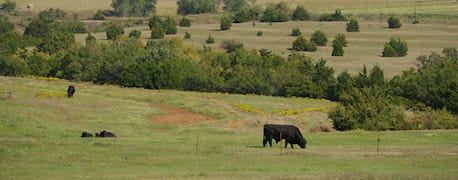April 6, 2015

High grain prices of years past have kept pasture land in short supply and raised pasture rent prices for some beef producers.
Related: Handshake isn't enough to solidify cattle grazing leases
However, as commodities move lower, Kevin Gould, a Michigan State University Extension specialist, has suggested it may be time to renegotiate pasture rental rates.
Pasture values generally tend to follow cattle and corn prices over time, and even though pressure may still be on grazing lands in the short term as livestock producers look to expand or find new grazing opportunities, cattle and corn prices largely retreated to a "new normal."
 If you have a bit of extra pasture to rent out, or are looking for some extra pasture to graze, where's the best place to start when negotiating a rental?
If you have a bit of extra pasture to rent out, or are looking for some extra pasture to graze, where's the best place to start when negotiating a rental?
Related: Write drought provisions in your pasture lease
Following those prices and local land rent for cropping systems will help determine pasture prices in your region, Gould says .
The main focus when leasing pasture is for both parties to receive a fair value for the land resource and grazing opportunity.
Gould recommends six steps to determining the market rental value of pasture land:
1. Determine pasture quality and project grazing value with flexibility build into the lease
2. Select a pricing and payment system that both parties agree on
3. Identify who is responsible for checking livestock inventory on a regular basis
4. Identify who is responsible for "problems" with livestock, fences, water systems, etc.
5. Put the entire lease agreement in writing under a contract format with signatures
6. Work toward multiple-year leases that benefit both parties
According to Iowa State University, figuring a pasture rental rate can be done by return on investment in pastureland, forage value, rent per head per month, carrying capacity or rent per pound of gain.
Some resources beef producers may consider when determining pasture rental rates include:
• Kansas State University pasture land rental rates
• "Pasture Rental Arrangements for Your Farm," offered by the North Central Regional Extension
• Establishing a Fair Pasture Rental Rate, an Ohio State University Extension Fact sheet
• USDA NASS Land Values and Cash Rents - Cropland and Pasture
• Determining pasture rents and calculating landowner costs, SDSU Extension
• 2014 South Dakota pasture and rangeland rental rates/considerations for beef producers
• Midwest Perennial Forage Working Group contract grazing fact sheet series
This story originally appeared on Dec. 19, 2013. It was updated Nov. 27, 2015.
About the Author(s)
You May Also Like




